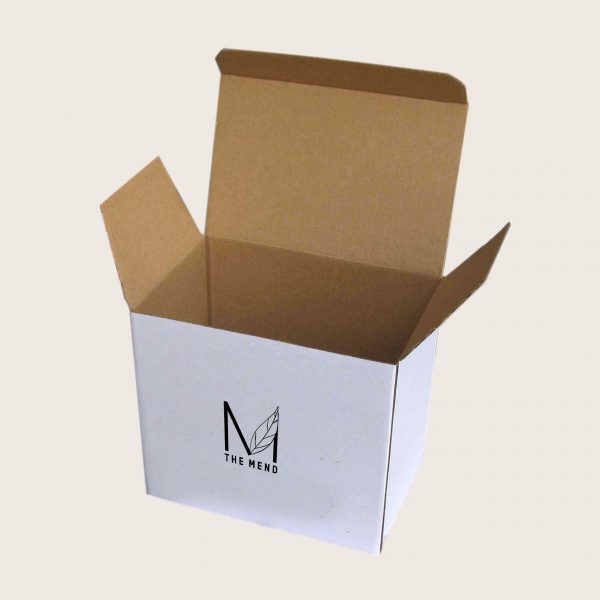Introduction
In today's global marketplace, shipping and logistics play a crucial role in the success of businesses. However, traditional shipping boxes made from non-biodegradable materials contribute to environmental pollution and waste. To address this issue, the demand for biodegradable shipping boxes has been on the rise. In this article, we will explore the concept of biodegradable shipping boxes, their benefits, and how they contribute to sustainable packaging solutions.
- Understanding Biodegradable Shipping Boxes
Biodegradable shipping boxes are packaging solutions made from materials that can break down naturally over time. Unlike traditional shipping boxes made from non-biodegradable materials like plastic or Styrofoam, biodegradable shipping boxes offer a sustainable alternative that reduces environmental impact.
- Benefits of Biodegradable Shipping Boxes
Biodegradable shipping boxes offer several benefits for businesses and the environment. Here are some key advantages:
- a) Environmental Friendliness
Biodegradable shipping boxes break down naturally without leaving behind harmful pollutants or microplastics. They are designed to minimize environmental impact and reduce waste.
- b) Sustainable Packaging
Using biodegradable shipping boxes aligns with sustainable packaging practices. These boxes are made from renewable resources and can be recycled or composted, contributing to a circular economy.
- c) Brand Image and Customer Perception
Businesses that prioritize sustainable packaging, including biodegradable shipping boxes, are seen as environmentally responsible. This can enhance brand image and attract environmentally conscious customers.
- d) Compliance with Regulations
In some regions, there are regulations or guidelines in place to reduce the use of non-biodegradable packaging materials. Using biodegradable shipping boxes ensures compliance with such regulations and demonstrates a commitment to sustainability.
- Types of Biodegradable Packaging Materials
There are various biodegradable materials used for manufacturing shipping boxes. Some popular options include:
- a) Corrugated Cardboard

Corrugated cardboard is widely used for shipping boxes due to its strength and recyclability. It is made from a combination of recycled paper and wood pulp, making it an eco-friendly choice for biodegradable shipping boxes.
- b) Bioplastics
Bioplastics, derived from renewable sources like cornstarch or sugarcane, are another option for biodegradable shipping boxes. These materials break down naturally and can be composted, reducing environmental impact.
- c) Mushroom Packaging
Mushroom packaging, also known as mycelium packaging, is a biodegradable and compostable material made from agricultural waste and the root structure of mushrooms. It offers excellent insulation and protection for shipping fragile items.
- Implementing Biodegradable Packaging Strategies
To successfully adopt biodegradable shipping boxes, businesses should consider the following strategies:
- a) Material Selection
Choose packaging materials that are certified biodegradable and made from renewable resources. Look for suppliers that provide eco-friendly options and ensure the materials meet industry standards.
- b) Design Optimization
Optimize the design of shipping boxes to minimize material waste and maximize efficiency. Right-sizing the boxes can reduce the need for excess packaging and help reduce shipping costs.
- c) Education and Communication
Educate customers about the benefits of biodegradable shipping boxes and how to properly dispose of them. Provide clear instructions on recycling or composting, emphasizing the importance of sustainability.
- Case Studies: Companies Leading the Way
Several companies have embraced biodegradable shipping boxes and set an example for others to follow. For instance, e-commerce giant Amazon has introduced "Frustration-Free Packaging" that includes biodegradable and recyclable shipping materials. Other companies, such as Patagonia and Lush, prioritize eco-friendly packaging and actively promote the use of biodegradable shipping boxes.
- Consumer Awareness and the Demand for Sustainable Packaging
Consumers are increasingly aware of the environmental impact of packaging materials and are actively seeking sustainable alternatives. The demand for products shipped in biodegradable packaging has grown significantly. Businesses that offer biodegradable shipping boxes can meet this demand and gain a competitive edge in the market.
- Overcoming Challenges in Adopting Biodegradable Shipping Boxes
While the benefits of biodegradable shipping boxes are evident, businesses may face challenges during the transition. These challenges include higher costs associated with sourcing sustainable materials, limited availability of certain packaging options, and the need for proper education and communication with customers. Overcoming these challenges requires a long-term commitment to sustainability and collaboration with eco-friendly suppliers.
- Government Initiatives and Regulations
Governments worldwide are taking steps to promote sustainable packaging practices. They are implementing regulations and initiatives to reduce the use of non-biodegradable packaging materials and encourage the adoption of biodegradable alternatives. Businesses should stay informed about these regulations and ensure compliance to support environmental sustainability.
- The Future of Biodegradable Packaging
The future of biodegradable packaging, including biodegradable shipping boxes, looks promising. As consumer demand for sustainable practices increases, businesses will continue to innovate and improve biodegradable packaging solutions. Advancements in materials science and recycling technologies will contribute to the development of even more environmentally friendly options.
Conclusion
Biodegradable shipping boxes are essential for businesses seeking sustainable packaging solutions. By adopting biodegradable materials like corrugated boxes or bioplastics, businesses can reduce their environmental impact and contribute to a circular economy. Embracing biodegradable packaging is not only an environmentally responsible choice but also a strategic decision that enhances brand image and meets the demands of environmentally conscious consumers.
FAQs
1: Are biodegradable shipping boxes as durable as traditional non-biodegradable boxes?
A1: Yes, biodegradable shipping boxes can be just as durable as traditional boxes. Materials like corrugated cardboard offer excellent strength and protection for shipping items.
2: How long does it take for biodegradable shipping boxes to break down?
A2: The time it takes for biodegradable shipping boxes to break down varies depending on the specific material and environmental conditions. However, many biodegradable materials can break down within a few months to a few years.
3: Can biodegradable shipping boxes be recycled?
A3: Yes, many biodegradable shipping boxes, particularly those made from corrugated cardboard, can be recycled. It's important to check with local recycling facilities to ensure proper disposal.
4: Are biodegradable shipping boxes more expensive than non-biodegradable ones?
A4: The cost of biodegradable shipping boxes may vary depending on the specific material and volume purchased. While biodegradable options may have a slightly higher upfront cost, the environmental benefits and positive brand image they provide can outweigh the initial investment.
5: Where can I find suppliers of biodegradable shipping boxes?
A5: Many packaging companies and suppliers offer biodegradable packaging options. Conducting online research or reaching out to sustainable packaging providers can help you find suitable suppliers for biodegradable shipping boxes.
In conclusion, biodegradable shipping boxes offer a sustainable and eco-friendly solution for businesses seeking to reduce their environmental impact. By adopting biodegradable materials and implementing sustainable packaging strategies, businesses can contribute to a greener planet and meet the demands of environmentally conscious consumers. The future of packaging lies in embracing biodegradability and striving for a more sustainable and circular economy.

No comments yet